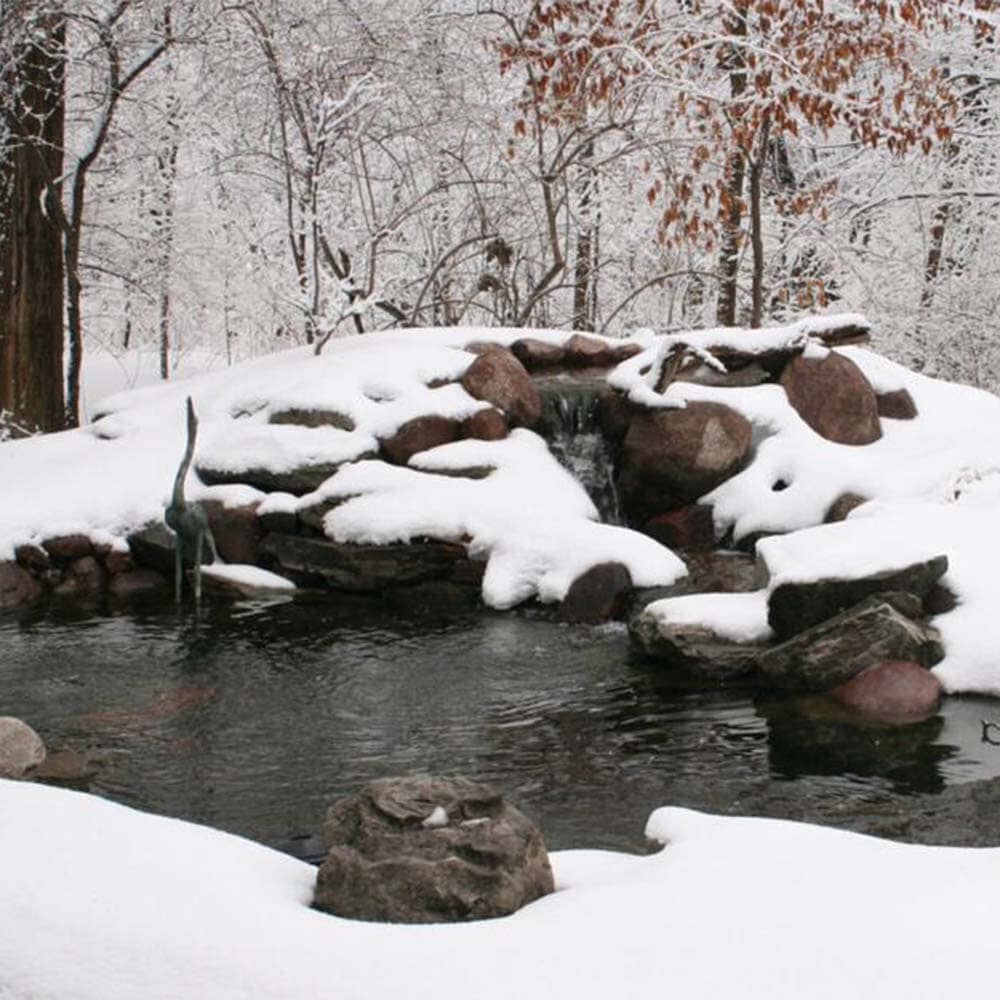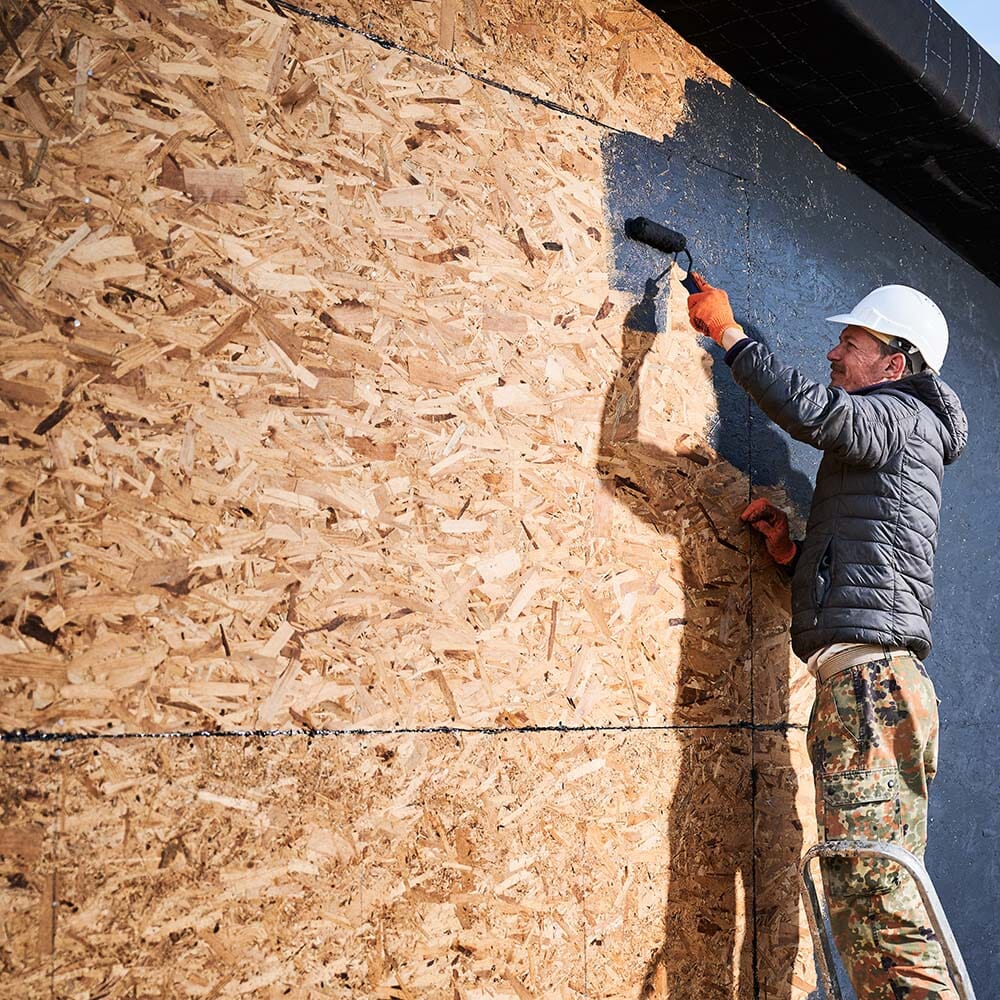A Comprehensive Guide to Prepare Your Pond for a Tranquil Winter Season
Winterizing a pond isn't just about protecting your fish and plants; it's also about maintaining the overall health of your pond ecosystem. Freezing water expands and it’s this expansion can cause damage to any features in your pond or the pond liner, leading to costly repairs come spring. In addition, the reduced sunlight and lower temperatures can affect the biological processes within your pond, potentially causing harmful conditions for your fish and plants.
Topping the list of reasons for pond winterization is that you want to prevent the water from fully freezing. A solidly frozen pond can trap harmful gasses produced by decomposing organic matter (like leaves and dead plants) and prevent oxygen from reaching your fish.
1. Timing Your Winterization
Embark on your winterization journey in the fall, before leaves gracefully descend and frost subtly makes its entrance. For those in Northern climates, set your sights on September/October, while Southern residents enjoy a bit more flexibility. Seek insights from local pond or fish experts to determine the optimal timing for your specific area.
2. Plant Care Insights
- Secure a pond net to capture falling leaves and debris, eliminating potential trouble. Roll up the net during leaf hiatus.
- As leaves descend, perform a brief clean of the skimmer basket every few days, particularly if your pond is embraced by a lush tree canopy. Once the foliage subsides, you can ease off on this task.
3. Introducing Cold Water Bacteria
Incorporate cold water bacteria to maintain your pond's clarity during winter. These resilient microorganisms excel in the cold, simplifying spring cleanup by efficiently breaking down debris.
4. Attending to Your Fish
- Adjust your fish's diet as temperatures drop to facilitate digestion. Cease feeding below 45-50F/7-10C as they gracefully enter their dormancy.
- If your pond boasts greater depth (42-48"), consider pampering your Koi and pond fish with a heater and aeration for the winter. For those with shallower ponds, contemplate bringing your fish indoors.
5. Managing Your Pond Through Winter
- Counteract water evaporation by topping up levels.
- Keep a vigilant eye for ice formations; maintain an opening with an aerator or in-pond pump.
6. Closing Operations
- Safely stow away the pump in a warm shelter.
- Evade freezing predicaments by draining pond plumbing.
- Perform a thorough cleaning and storage of filter media, UV systems, and ionizers in a warm haven.
- Ensure proper aeration for fish oxygen and utilize a de-icer in colder climates.
Winterizing your pond becomes an effortless endeavor with these straightforward steps. Your pond will be poised for a tranquil winter and a lively spring return.
Preparing Your Pond for Winter: The Basics
Before you begin the process of winterizing your pond, there are a few basic things you need to do. Start by cleaning your pond thoroughly. Remove any leaves, debris, or dead plants that have accumulated over the summer and fall months.
Next, check the health of your fish. Sick or stressed fish are less likely to survive the winter, so it's important to treat any diseases or parasites before the cold sets in.Finally, adjust your feeding schedule. As temperatures drop, your fish's metabolism will slow down. This means they'll need less food. You’ll want to avoid overfeeding the fish during the colder months because this can lead to excess waste and that can also negatively affect water quality.

How to Winterize Your Pond: A Step-by-Step Guide
1. Clean Your Pond Thoroughly
The first step in winterizing your pond is to give it a thorough cleaning. Remove any leaves, debris, and dead plants that have accumulated. This will help prevent the build-up of harmful gasses during the winter and make it easier for your pond's filtration system to function effectively.
2. Check the Health of Your Fish
Before winter sets in, it's important to check the health of your fish. Sick or stressed fish are less likely to survive the winter months, so it's crucial to treat any diseases or parasites as soon as possible. If your fish appear to be in good health, it's still a good idea to add a broad-spectrum treatment to the water as a preventative measure.
3. Adjust Your Feeding Schedule
In colder weather, your fish's metabolism will slow down, and they'll require less food. As the temperature drops, gradually reduce the amount of food you're providing to prevent excess waste and preserve the quality of the water.
4. Install a Pond Heater or De-Icer
One of the most important steps in winterizing a pond is to prevent it from freezing solid. A pond heater or de-icer can help maintain a small area of open water, allowing for gas exchange and helping to keep your fish alive.
5. Protect Your Pond with SEMCO Liquid Membrane
Protecting your pond liner from the harsh winter conditions is essential. To do this effectively, consider using a product like SEMCO Liquid Membrane. SEMCO Liquid Membrane is a modern day solution that offers a range of benefits. It's easy to use, reliable, and affordable.
SEMCO Liquid Membrane can be applied to your pond to provide a protective, waterproof layer. It doesn’t emit harmful VOCs and it’s also nontoxic, making it safe for your fish and plants. What's more, it's incredibly durable and can withstand the freezing and thawing cycles of winter without cracking or peeling.





